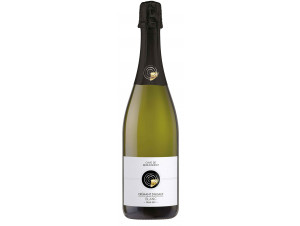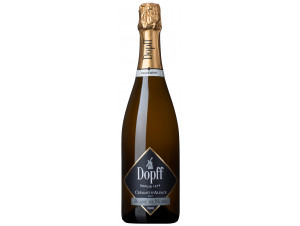You have no items in your shopping cart.
Wine Alsace
-
Top Selling-20%
-
Top Selling-21%
-
Top Selling
- -21%
- -30%
- -21%
- -21%
For part of its history, the region belonged to Germany, a fact reflected in the local names on the beautiful bottles containing the precious wines of Alsace. On both sides of the border, the tradition is to ferment all the sugars in the grapes to obtain a pure, dry alcohol, whose aromas give it character. Indeed, rather than relying on oak barrels to impart a rich, spicy temperament to the wine, it is all about the perfect ripening of the grapes used. Alsace white wine owes its incomparable notes to an exceptional terroir that is perfectly exploited.
The unique terroir of the Alsace vineyard
The hillsides of the Alsatian vineyard cover 15,000 hectares of undulating land between Strasbourg and Mulhouse, making the region the largest producer of white wine in the country. The geographical particularities of the Alsace vineyards are due to two main factors: the presence of the Vosges mountains to the west and the Rhine to the east. The vineyards are concentrated in a thin strip of about a hundred kilometres long and 1.5 to 3 kilometres wide running from north to south.
At the closest point to the Vosges mountains, the altitude of some properties can reach 420 m and never fall below 175 m, which is ideal for ensuring perfect temperature, optimal drainage and as much exposure as the latitude allows. The Vosges mountains, which are mainly from the west, form an effective natural barrier to protect the vineyards from rain and maritime influences and the region is therefore relatively dry and sunny, to the extent that Colmar is the least rainy city in France.
The hillsides are mostly east-facing, but some sites get more sunshine from southwest to southeast exposure. As for the geology contributing to the taste of Alsace wines, it is sufficiently varied to offer conditions that lend themselves to the production of wines with well-defined characteristics.
On the foothills of the Vosges mountains, at the level of a fracture zone caused by a collapse of the relief, stands the Rhine Graben, of which the Alsace plain covers the southern part. Thanks to this geological elevation, the subsoil of this region is particularly eclectic and offers a variable concentration of rocks with minerals that lend themselves wonderfully to vine growing. Sandstone, schist, gneiss, granite and limestone support the vineyards, while the rocky slopes of the sub-Vosgian hills offer very old elements such as plutonic and metamorphic granite, gneiss and slate. Further down, where the slope is less steep, there are layers of limestone and marl covered with loess, a sedimentary rock that is very favourable to the cultivation of vines, since all the great Alsace wines come from it. As for the fertile plain, thanks to the alluvial deposits of the Rhine, they are ideally suited to the production of Alsace appellation wines and Crémants d'Alsace.
The viticultural history of Alsace wines goes back to antiquity
Viticulture was developed in Alsace in ancient times by the Romans. Fond of this drink, the Romans carried it with them to supply their garrisons during their conquests. Once they were established in a territory, they actively contributed to the development of local winegrowing. During the Carolingian period, under the influence of the monastic orders, the expansion of the vineyard accelerated. Indeed, literary sources from the beginning of the 9th century mention that from then on wine-growing had developed in more than 160 places in Alsace.
The Middle Ages were a prosperous period for the Alsatian vineyards. Alsatian wines were recognised and reputed beyond the borders of Europe. The surface area of the vineyard was twice as large as it is today. The wines were exported in quantity, notably to the Nordic countries, by river using the Rhine and its tributaries. It is in Alsace that the oldest known wine in the world is still preserved today, dating from 1472. 1618 and the beginning of the Thirty Years' War sounded the death knell of this period of wine prosperity.
Alsace will see its territory plundered and destroyed by the war, the populations decimated by famine and plague. Almost all the vineyards were destroyed. At the end of the war, the winegrowers, often gathered in associations, began to rebuild the vineyards. In 1828, the vineyard returned to a production area comparable to that of the pre-war period, namely 30,000 hectares.
The contemporary period will again see wars put the life of the vineyard to the test. From 1945 onwards, a strong will was heard. That of instituting a policy of quality in wine production and acting to protect know-how. This will will lead in 1962 to the recognition by decree of the AOC Alsace, followed in 1975 by the AOC Alsace Grand Cru and in 1976 by the AOC Crémant d'Alsace.
The appellations of the Alsatian vineyard
Alsatian wines are best known for their exceptional grape varieties, but this does not prevent the region from benefiting from several categories of appellations within which production is classified and offers wines of great diversity.
The AOC AOP Alsace Grand Cru
Regrouping 51 appellations on 47 communes, the classification Grand Cru d'Alsace designates white wines produced on certain well specified parcels of the Alsatian vineyard, in particular those with the best exposure. Stretching from Marlenheim to Thann, the area is particularly suited to the cultivation of the grape varieties for which Alsace wine is famous.The appellation accepts seven so-called "noble" grape varieties: Riesling, Gewurztraminer, Muscat rose à petits grains, Muscat blanc à petits grains, Muscat ottonel, Pinot gris and Sylvaner. Sylvaner is only allowed on the Zotzenberg of Mittelbergheim.
To guarantee exceptional quality, the yield is limited to 55 hectolitres per hectare since 2001. The white wines of Alsace considered as Grands Crus can be harvested late or through the process of selection of noble grapes on vines aged at least two years.
The AOC AOP Alsace
The appellation vin d'Alsace is produced in the whole of the Alsatian vineyards, in the departments of Haut-Rhin and Bas-Rhin. This classification, unlike Alsace Grand Cru and Crémant d'Alsace, includes all nine grape varieties grown in Alsace, as the requirements are less restrictive than for the other appellations.The grape varieties used are those that have long been recognised in the region, such as Riesling, Gewurztraminer and Sylvaner, which are the main ones. The famous pinot gris, also known as Tokay d'Alsace, pinot blanc, pinot noir and chardonnay are also very well represented, as well as several muscats. Finally, savagnin rose and chasselas complete the selection. Alsace white wine yields are limited to 80 hectolitres per hectare. Rosé wines produce a maximum of 75 hectolitres per hectare and reds 60.
Crémant d'Alsace
The AOC Crémant d'Alsace has been recognised since 1976 and has the particularity of marketing its wines in bottles similar to those used for champagne, due to the traditional production method which requires a second fermentation in the bottle. This sparkling Alsace wine, produced in the entire vineyard, is mainly made from Pinot Blanc. Some proportions of Pinot Gris, Pinot Noir but also Riesling, Auxerrois and Chardonnay may also be used. Obligatorily bottled in the region where it is produced, Crémant d'Alsace is made by 500 independent producers and represents a quarter of the AOC of Alsace.Thanks to the use of manual processes and grapes harvested a few days before those destined for the production of other appellations, this sparkling wine has retained its unique character. This white Alsatian wine with a pleasant effervescence has pleasant aromas of white and yellow fruit as well as citrus, flowers and even brioche. Delicate and exciting, Crémant d'Alsace goes wonderfully well with seafood, poultry, cheeses with a bloomy rind and fruit-based desserts.
Late Harvest
Alsace wines bearing the Vendanges Tardives label have a particularly high sugar content at harvest because, as the name suggests, the grapes are harvested at a very advanced stage of maturation. The ideal climate of the region allows sufficient time for the development of the famous Botritis Cinerea, also known as noble rot. Indeed, this semi-continental climate, characterised by low rainfall and remarkable sunshine in autumn, allows us to wait for the arrival of noble rot without the risk of losing the harvest.This gives the berries the opportunity to dry out and concentrate the sugars and aromas for powerful and mellow wines. Silky, unctuous, sweet, Alsace white wines bearing the Vendanges Tardives label offer a sugar-acidity balance that is close to perfection and are a delightful accompaniment to highly flavoured dishes.
Selection of Noble Grapes
The Sélection de Grains Nobles label also refers to Alsace wines produced from selected grapes affected by noble rot. Thanks to this enrichment of the berries, a hand harvest and a minimum of 18 months maturation, Alsace wines or Alsace Grand Cru with this label are characterised by an exceptional richness and complexity.Particularly suited to the Riesling grape variety, the process produces a perfectly balanced wine that is ideal for lobster. With a Pinot Gris, game and foie gras will form an impeccable match, and a Gewurztraminer will accompany desserts marvellously.
The crus of the Haut-Rhin
The region's limestone, granite and gneissic soils produce magnificent dry and sweet Alsace wines. Among the most renowned estates, we can mention the Weinbach estate in Kayserberg, the Clos Saint-Landelin estate in Rouffach, the Marcel Deiss estate in Bergheim and the Trimbach estate in Ribeauvillé.The crus of the Bas-Rhin
15 great Alsace wines, mainly made from Riesling, Gewurztraminer and Pinot Gris are produced in this wine region which stretches from Strasbourg to Sélestat. Among the most renowned estates are Marc Kreydenweiss in Andlau, Allimant-Laugner in Orschwiller and Ostertag in Epfig. The great white wines of Alsace, bottled in their typical Alsatian flute, are a brilliant accompaniment to all sorts of dishes and occasions thanks to their sometimes delicate and light, sometimes sweet and opulent notes, or sometimes fine and aromatic, deep and subtle. Endowed with an elegance born of ancestral know-how, Alsace wines are the prestige and renown of a region that offers them the perfect setting to highlight their exceptional character.Winemakers
Listed 400 winemakers
Production
1.15 million hectolitres per year (90% white wines, 10% red wines) (4% Alsace Grand Cru)
Area
.
Soil and subsoil
Granite, limestone, clay, schist, sandstone
Grape variety
Reds and rosés : .
Whites : Gewurztraminer, Pinot Noir, Pinot Gris, Pinot Blanc, Riesling, Sylvaner, Edelzwicker: blend of white grapes of Alsace, Muscat and Gentil appellations: Alsace blend comprises 50% Riesling, Muscat, Pinot Gris and/or Gewurztraminer, 50% Sylvaner, Ch
Alsace Chasselas ou Gutedel
Alsace Grand Cru Altenberg de Bergbieten
Alsace Grand Cru Altenberg de Bergheim
Alsace Grand Cru Eichberg
Alsace Grand Cru Froehn
Alsace Grand Cru Furstentum
Alsace Grand Cru Hatschbourg
Alsace Grand Cru Kanzlerberg
Alsace Grand Cru Kirchberg de Ribeauvillé
Alsace Grand Cru Kitterlé
Alsace Grand Cru Mandelberg
Alsace Grand Cru Moenchberg
Alsace Grand Cru Muenchberg
Alsace Grand Cru Osterberg
Alsace Grand Cru Pfersigberg
Alsace Grand Cru Saering
Alsace Grand Cru Schlossberg
Alsace Grand Cru Schoenenbourg
Alsace Grand Cru Sporen
Alsace Grand Cru Steinklotz
Alsace Grand Cru Wineck-Schlossberg
Alsace Grand Cru Winzenberg
Alsace Klevener de Heiligenstein







































 TWIL - Achat de Vin
TWIL - Achat de Vin


